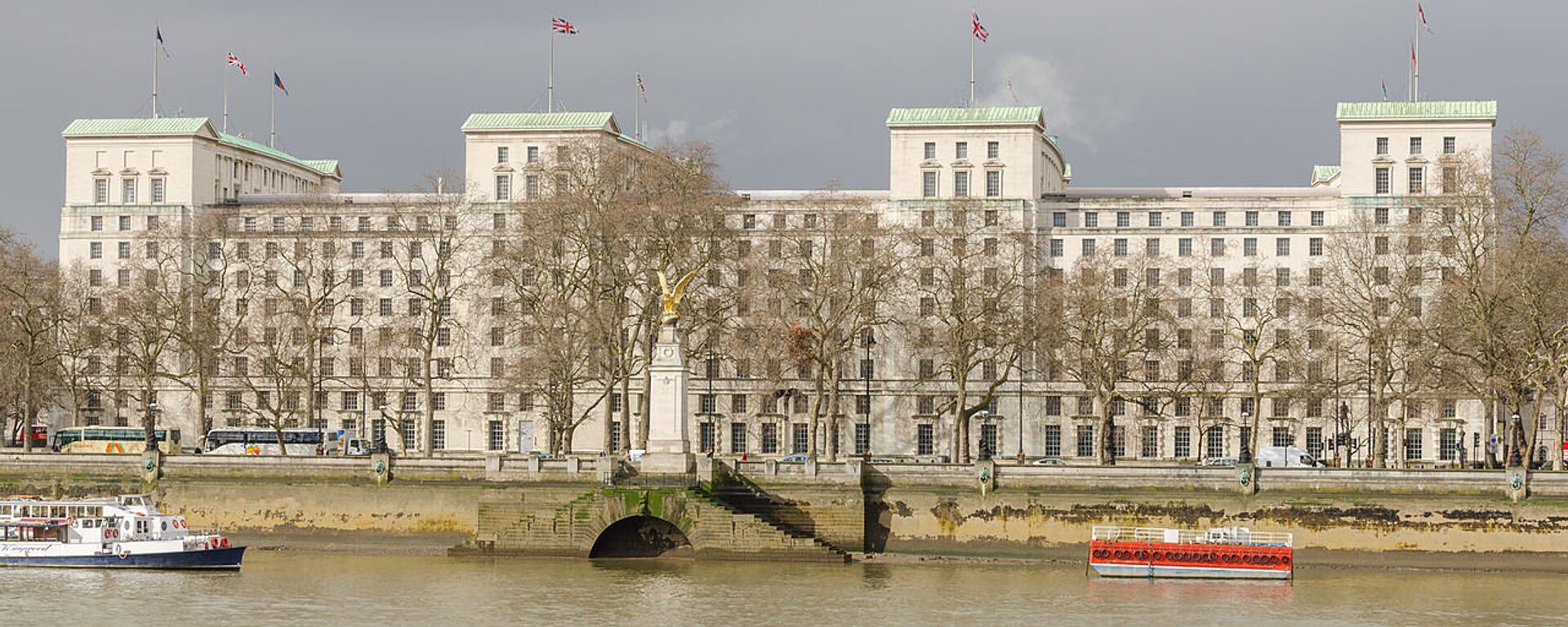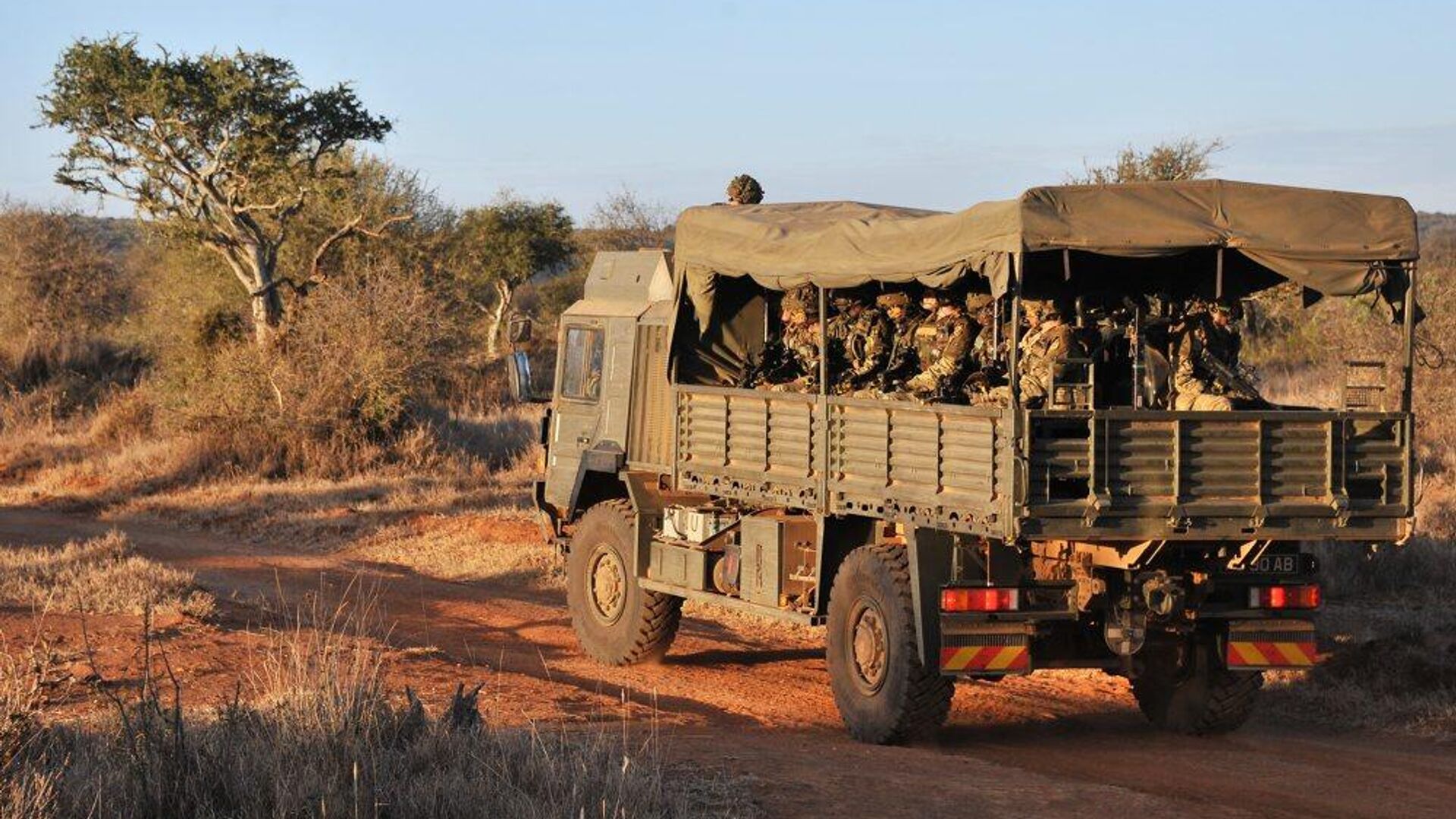https://sputnikglobe.com/20220429/british-army-representative-admits-use-of-highly-toxic-white-phosphorus-in-kenya-report-says-1095155742.html
British Army Representative Admits Use of Highly Toxic White Phosphorus in Kenya, Report Says
British Army Representative Admits Use of Highly Toxic White Phosphorus in Kenya, Report Says
Sputnik International
Phosphorus ammunition is a killer of natural resources and people. In addition to creating fires that are difficult to fight, it leaves dangerous burns on the... 29.04.2022, Sputnik International
2022-04-29T22:52+0000
2022-04-29T22:52+0000
2022-11-23T11:38+0000
africa
uk armed forced
white phosphorus
kenya
east africa
https://cdn1.img.sputnikglobe.com/img/07e6/04/1d/1095155987_0:53:1001:616_1920x0_80_0_0_cef1f955e5a3641c62f4342f0df7b0b2.jpg
The United Kingdom has admitted it used dangerous ammunition filled with white phosphorus during military exercises in Kenya, according to an internal military investigation obtained by Declassified UK.Parliamentary Under-Secretary of State for the UK Armed Forces James Heappey said the chemical was used to illuminate the area “for night training as well as smoke screening reasons.”As the military drills were said to have taken place across a wide area in Kenya, including communal land, live firing of mortars may have affected areas “frequented by farmers, villagers and nomadic tribes-people.”MP Kenny MacAskill, who revealed the use of phosophorus in Kenya, said in Parliament that “the dangers of white phosphorus are well documented and have caused injury and misery in many conflicts.”The British Army Training Unit Kenya (BATUK) has been “accused of murder, rape, sexual assaults, environmental damage, sexual exploitation of Kenyan women, and deaths caused by the negligent handling of unexploded ordnance,” according to Nation.Africa.The actions by BATUK resulted in legal proceedings brought by nearly 1,500 residents of the Lolldaiga community in Laikipia, who sued the unit for setting a fire that destroyed more than 10,000 acres at the conservancy. The incident, which happened on March 25, 2021, resulted in adverse health problems, including “serious eye-sight problems and miscarriages in both women and livestock,” according to the plaintiffs.The disaster was said by locals to have caused not only environmental damage but also a human-wildlife crisis, forcing “animals searching for water and pasture to invade their farms” and destroying crops.Kenyan lawyer Kelvin Kubai, who represents the community, said that the agreement allowing British forces to train in the country had only recently included a clause stipulating the right of the host nation to monitor the environmental impact of the training exercises.Projectiles with white phosphorus ignite spontaneously under the influence of oxygen and are used to burn out the affected area. The combustion temperature of white phosphorus is 1200–1300 degrees, which is comparable to the temperature of basalt lava right at the outlet of a volcano. In contact with the body, the substance instantly burns through clothes and causes severe burns, lethal in some cases. Burning is accompanied by the release of toxic smoke.Fighting white phosphorus fire is incredibly difficult - the flame resists water as well as fire extinguishers. The substance either completely burns out on its own or is extinguished in the absence of oxygen.Munitions with white phosphorus were introduced during the First World War to hit both infantry in open areas and soldiers hiding in trenches, dugouts and concrete fortifications, burning down fortifications and entire settlements. In comparison with other incendiary substances of that time, phosphorus stood out not only for its destructive power but also for the fact that it produced a strong demoralizing effect on the enemy.At present, the additional protocols of 1977 to the Geneva Convention for the Protection of Victims of War (1949), as well as Protocol III to the "Convention on Certain Conventional Weapons" (1980) are considered to be the basic document for the prohibition of phosphorus munitions.The United Nations by special regulations has forbidden the use of phosphorus ammunition in areas with a civilian population. Other documents prohibiting phosphorus munitions are the additional protocols of 1977 to the Geneva Convention for the Protection of War Victims (1949), as well as Protocol III to the “Convention on Certain Conventional Weapons” (1980).However, many states have not yet acceded to these protocols, including Israel and the United States, and white phosphorous has not been used only on military units. In 2004, the US military attacked the Iraqi city of Fallujah, launching, among other things, weapons with white phosphorus. The attack resulted in 800 dead, mostly civilians, according to the Red Cross.
https://sputnikglobe.com/20211108/family-of-kenyan-woman-allegedly-murdered-by-british-soldier-take-legal-action-against-uk-mod-1090558296.html
africa
kenya
east africa
Sputnik International
feedback@sputniknews.com
+74956456601
MIA „Rosiya Segodnya“
2022
News
en_EN
Sputnik International
feedback@sputniknews.com
+74956456601
MIA „Rosiya Segodnya“
Sputnik International
feedback@sputniknews.com
+74956456601
MIA „Rosiya Segodnya“
uk armed forced, white phosphorus, kenya, east africa
uk armed forced, white phosphorus, kenya, east africa
British Army Representative Admits Use of Highly Toxic White Phosphorus in Kenya, Report Says
22:52 GMT 29.04.2022 (Updated: 11:38 GMT 23.11.2022) Phosphorus ammunition is a killer of natural resources and people. In addition to creating fires that are difficult to fight, it leaves dangerous burns on the skin and is extremely poisonous. Ingestion of 0.05 to 0.15 grams of the substance is enough to be fatal.
The United Kingdom has admitted it used dangerous ammunition filled with white phosphorus during military exercises in Kenya, according to an internal military investigation obtained by
Declassified UK.
Parliamentary Under-Secretary of State for the UK Armed Forces James Heappey said the chemical was used to illuminate the area “for night training as well as smoke screening reasons.”
As the military drills were said to have taken place across a wide area in Kenya, including communal land, live firing of mortars may have affected areas “frequented by farmers, villagers and nomadic tribes-people.”
MP Kenny MacAskill, who revealed the use of phosophorus in Kenya, said in Parliament that “the dangers of white phosphorus are well documented and have caused injury and misery in many conflicts.”
“That it should be used in training exercises near where civilians are located or through where they’ll pass is highly dangerous. It just shouldn’t be happening and the Ministry of Defence should cease this practice,” he said.
The British Army Training Unit Kenya (BATUK) has been “accused of murder, rape, sexual assaults, environmental damage, sexual exploitation of Kenyan women, and deaths caused by the negligent handling of unexploded ordnance,” according to
Nation.Africa.
The actions by BATUK resulted in legal proceedings brought by nearly 1,500 residents of the Lolldaiga community in Laikipia, who sued the unit for setting a fire that destroyed more than 10,000 acres at the conservancy. The incident, which happened on March 25, 2021,
resulted in adverse health problems, including “serious eye-sight problems and miscarriages in both women and livestock,” according to the plaintiffs.
The disaster was said by locals to have caused not only environmental damage but also a human-wildlife crisis, forcing “animals searching for water and pasture to invade their farms” and destroying crops.
Kenyan lawyer Kelvin Kubai, who represents the community, said that the agreement allowing British forces to train in the country had only recently included a clause stipulating the right of the host nation to monitor the environmental impact of the training exercises.
“I feel the British army has been taking advantage of the absence of such a monitoring law as a check on the use of their training fields. This law is being introduced quite late, after British soldiers have already been training in Kenya for many years,” he said.
Projectiles with white phosphorus ignite spontaneously under the influence of oxygen and are used to burn out the affected area. The combustion temperature of white phosphorus is 1200–1300 degrees, which is comparable to the temperature of basalt lava right at the outlet of a volcano. In contact with the body, the substance instantly burns through clothes and causes severe burns, lethal in some cases. Burning is accompanied by the release of toxic smoke.
Fighting white phosphorus fire is incredibly difficult - the flame resists water as well as fire extinguishers. The substance either completely burns out on its own or is extinguished in the absence of oxygen.
Munitions with white phosphorus were introduced during the First World War to hit both infantry in open areas and soldiers hiding in trenches, dugouts and concrete fortifications, burning down fortifications and entire settlements. In comparison with other incendiary substances of that time, phosphorus stood out not only for its destructive power but also for the fact that it produced a strong demoralizing effect on the enemy.

8 November 2021, 07:31 GMT
At present, the additional protocols of 1977 to the Geneva Convention for the Protection of Victims of War (1949), as well as Protocol III to the "Convention on Certain Conventional Weapons" (1980) are considered to be the basic document for the prohibition of phosphorus munitions.
The United Nations by special regulations has forbidden the use of phosphorus ammunition in areas with a civilian population. Other documents prohibiting phosphorus munitions are the additional protocols of 1977 to the Geneva Convention for the Protection of War Victims (1949), as well as Protocol III to the “Convention on Certain Conventional Weapons” (1980).
However, many states have not yet acceded to these protocols, including Israel and the United States, and white phosphorous has not been used only on military units. In 2004, the US military attacked the Iraqi city of Fallujah, launching, among other things, weapons with white phosphorus.
The attack resulted in 800 dead, mostly civilians, according to the Red Cross.





